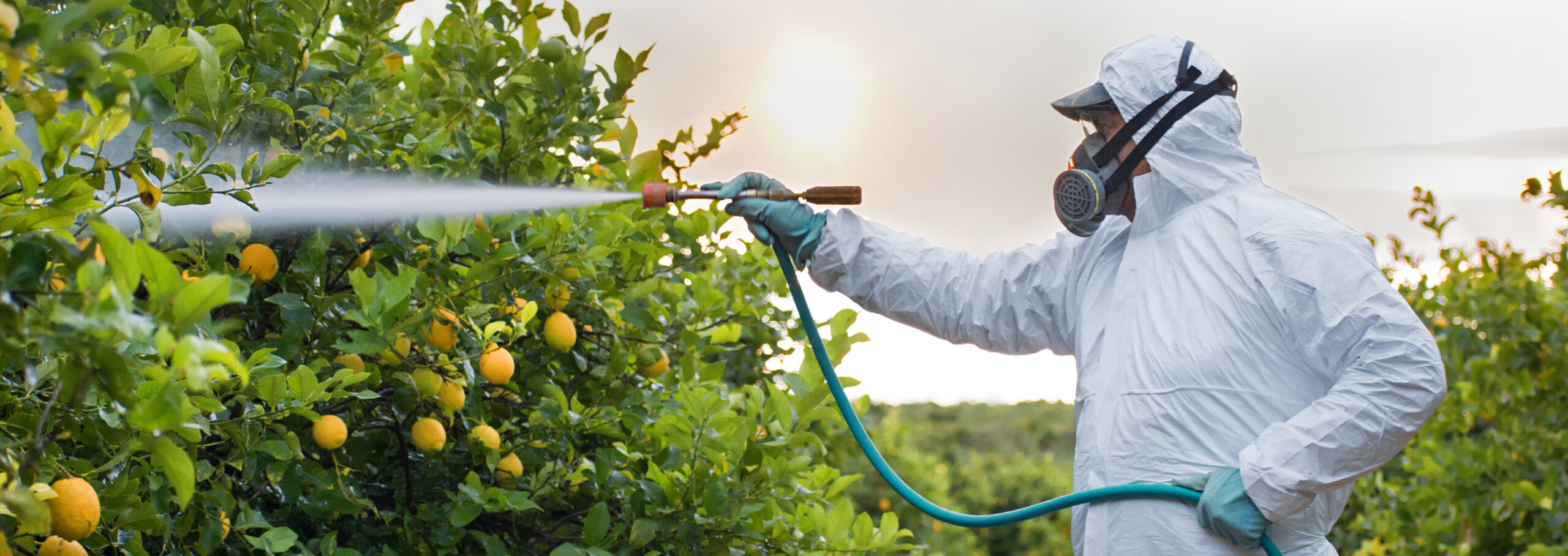
Fact Sheet
Organophosphates
Overview
Organophosphates are a class of pesticides that are responsible in part for pollinator decline. They are primarily used in the agriculture, landscaping, and mosquito management industries. Although their ubiquity declined in 2001 after the EPA made discoveries regarding their adverse effects on human, wildlife, and ecosystem health, they still account for 33% of all insecticides on the market. Some examples of organophosphates include: chlorpyrifos, glyphosate, malathion, diazinon, and disulfoton. While organophosphates are not solely responsible for pollinator decline, they are an important contributor. Their effect is similar to neonicotinoids, another class of pesticides often included in state policies. Organophosphates target the nervous system of insects, inhibiting pollinators’ capacity to function properly. Exposure to organophosphates often disrupts bees’ ability to find pollen and return to the hive, leaving the colony vulnerable to developing colony collapse disorder. Additional restrictions or regulations on use of these insecticides would be beneficial to pollinator health.
Key Points
Key Point 1
The ingestion of organophosphate particles interferes with bee's memory and learning capability, reducing their survival ability. (Freethink)
Key Point 2
Research shows that bees that interacted with organophosphates had mortality rates up to 100%. (Zhu et al.)
Key Point 3
Frequent, low exposure to organophosphates is found to increase the risk of developing neurological disorders, while incidences of high exposure have led to death in humans. (National Geographic)
Key Point 4
Migrant farm workers are most at risk to organophosphates due to the frequent exposure nature of their work, especially during the application process. (Medical News Today)
Key Point 5
Scientists developed a means of detoxifying organophosphates before they are absorbed and harm the bee. (Cornell)
Legislation
The EPA committed to upholding its ban on chlorpyrifos and published its final rule as of February 2022. Below is additional legislation that regulates or restricts organophosphates’ use.
- Maine LD 316 (2021-Enacted): Prohibits the use of chlorpyrifos and was enacted prior to EPA ban.
- Maine LD 125 (2021-Passed both houses): Prohibits the aerial spraying of glyphosate and other synthetic herbicides for the purpose of silviculture.
- Washington SB 6518 (2020-Introduced): Recognizes the potential for organophosphates to harm aquatic ecosystems and wildlife, as well as their link to neurological issues.
- Vermont H 15 (2021-Introduced): Prohibits the sale of the organophosphate glyphosate unless authorized by the Secretary of Agriculture, Food, and Markets upon determination of a threat to Vermont crops requiring glyphosate.
- New York A 4588 (2019-Introduced): Implements mandatory testing for the presence of organophosphate pesticides for all handlers of pesticides, including applicators and mixers of pesticides.
- Maine HP 1560 (2008-Enacted): Provides rules for the use of organophosphate pesticides adjacent to occupied areas.

Empower State Environmental Champions
Your donation funds the fight for equitable actions that protect the environment and our health.
Donate